Crostoli
“Mamma, Che buona!” My father William Anthony Crocetti, born Guglielmo, did not speak English until he went to grade school. So I have no doubt that was what he exclaimed every time he ate the crostoli his mother made in her kitchen at 319 South Sixth Street in their south end neighborhood of Steubenville, Ohio. I wasn’t there, but those were his words. Senza dubito. And I bet Dino echoed his big brother.
Italians have been making these treats for hundreds of years. A recipe even appears in Pellegrino Artusi’s seminal cookbook, L’Arte di Mangiar Bene (The Art of Eating Well), first published in 1891. Although these delightful pastry knots are the prototypical Carnevale indulgence, they are also served at Christmas, New Year’s and Easter. This type of dolci is called nastri delle suore (nun’s ribbons), but that would never do for Italy, a country whose inhabitants identify themselves by regional ties first and as Italians second. Twenty regions – more than twenty names. These treats are called galani or frittelle alla Venezia in Venice and the Veneto, crostoli in Friuli, cenci (rags and tatters) or donzelli (young ladies) in Tuscany, frappe in Umbria, sfrappole or lattughe (lettuces) in Emilia-Romagna, chiacchiere (gossips) in Lombardy, chiacchiere di suore (nun’s gossips) in Parma, bugie (lies) in Piemonte and gigi in Sicily. Da vero. Call them what you will, they are fried dough, and I love fried dough. Like my father, I grew up eating these deep fried delights.
We called my grandmother Mom, and no typical nonna was she. When she arrived at our home I could always tell if she had a treat for us; instead of exiting her car and making her way directly up our driveway she went first to her passenger door, opened it and removed a long flat box. Then up our driveway she walked, box in hand, the clack-clack-clack of her Spring-o-lator shoes announcing her approach. We never knew what she had in that box, but we always knew it would be good. We four kids, my brothers Guy and Marc and my sister Toni and I, loved the cookies and we gobbled them up. My mother could always tell who had done most of the gobbling – the powdered sugar on the guilty party’s hands, face and chest was a dead giveaway. In fact that is how these cookies got their Piemontese name, bugie – liar’s cookies – as in “No Mamma. It wasn’t me, no mamma. I don’t know who ate the cookies…” Another of this cookie’s colorful names is chiacchiere or gossips. Some say the name came from the ladies of Lombard and the nuns of Parma who ate them as they gossiped. Still another source tells us the name originated with the sound the knots make when dropped in the cooking oil – “Pssst !” – just like the town gossip as she summons her listeners. Great stories all, which ever is true.
This cookie has a variation for every nonna. Some call for grappa, others get their alcohol kick from Gran Marnier, vin santo, white wine or rum while a few eschew spirits altogether. In Tuscany they are often made with olive oil in place of butter, and some regions use lard or shortening. Some use orange in place of lemon or no citrus at all. For the finishing touch, some cooks use confectioner’s sugar while others choose cinnamon sugar. As to the shape, some are plain ribbons, some are formed into pretzel-like shapes while others are twisted and pinched in the middle. You will also find flat squares or rectangles, some with one or two slits along the middle. This is the tradition of Italy’s beloved nonne at work, the tradition of variation on a theme that makes this cuisine so inviting, so forgiving, and so much fun.
Flour in Italy is classified by how finely it is milled, either 1, 0 or 00. Doppio zero is the most finely milled and feels like talcum powder. Do not confuse how finely ground the flour is with its protein content. Any strength flour can be ground into doppio zero. Just as we have pastry flour, all-purpose flour and bread flour with their varying protein contents, so do the Italians. They just have the added luxury of varying degrees of milling. To see the full range of flours available to the Italian cook go to the Molino Caputo website. I use a doppio zero flour that is comparable in protein content to our American all-purpose flour. Doppio zero flour is available at Italian markets and Amazon. com. If you can not find it, regular all-purpose flour will do nicely. Use the same amount the recipe calls for.
Mom made her dough by hand in the traditional manner – mounding her flour on a wooden board, making a “well” in the center, filling it with the ingredients and incorporating them with a fork. In a concession to the age of the mechanized kitchen I use my KitchenAid.
This dough is a dream to work with. Do not be intimidated by the idea of rolling it very thinly. You will be able to do so with great ease. Honest. On the subject of frying oil – Mom used solid Crisco, and there is no reason to change that. But if you have something else on hand, peanut oil, vegetable oil, feel free to make use of what is in your pantry. Mom drained the cookies on brown grocery bags. Some cooks use paper towels. I have found that placing the fried cookies directly on a cooling rack suspended over a sheet pan works very well.
A note about these cookies: they fry up very quickly, so be sure to have everything you need close at the ready. Banish the kids and pets from the kitchen. You will be working with a large volume of very hot oil.
And finally, do not overcook the crostoli. If you do you will not taste the grappa!
As the Italians say “Divertiti!” Have fun!
Form knots and place on a floured tea towel.
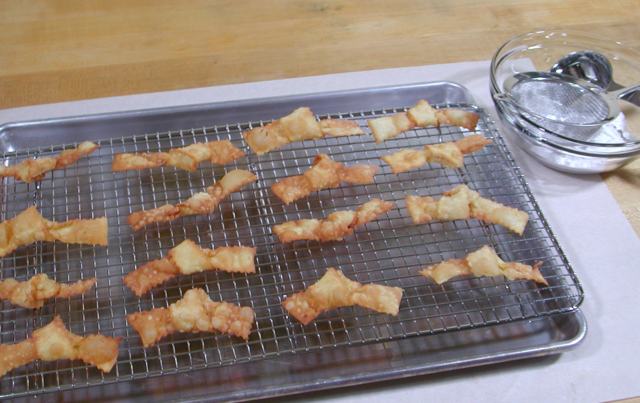
To keep things neat, place your tray and rack on a large piece of parchment. Have ready a bowl of confectioner's sugar and a small strainer.
Crostoli
makes about 3 ½ dozen
200 grams 00 flour (This should measure 1 ½ cups when lightly spooned into measuring cups, then leveled with a flat edge.)
1 tablespoon granulated sugar
zest of 1 lemon
generous pinch salt
1 large egg, lightly beaten
1 tablespoon unsalted butter, at room temperature
1 tablespoon grappa
1 teaspoon vanilla extract
3 to 4 tablespoons whole milk
shortening or oil for frying
confectioner’s sugar
In a mixer bowl fitted with paddle attachment, combine the flour, sugar, lemon zest and salt. With mixer running add egg, butter, grappa and vanilla. Gradually add 3 ½ tablespoons of milk to form a soft malleable dough. Remove dough from bowl, pat into a disk. Wrap in plastic, and set aside to rest for 1 hour.
Line a sheet pan or tray with a tea towel. Lightly dust the towel with flour. Set aside. Divide dough in 2 pieces, keeping the one you are not using wrapped in plastic or covered with a towel. On a lightly floured board, roll out dough as thinly as you can, about 1/16-inch thickness; dough should be almost translucent. Using a ravioli cutter cut dough to form ribbons 6 inches long and 1 inch wide. Tie a knot in the center of each ribbon, and place on the towel-lined pan in a single layer. Keep the knots covered as you work.
Meanwhile heat a generous amount of oil to 350 degrees in a heavy deep-sided pan. A candy thermometer placed on the side of your pan assures correct cooking temperature. Have ready a rack placed over a sheet pan. Fry the knots, a few at a time, until they color, about 20 to 30 seconds. Remove with a slotted spoon, spider or metal tongs, and place on rack to drain. Sprinkle liberally with confectioner’s sugar. Crostoli are best eaten the day they are made.
Note: You can click on any picture to see a slide show!
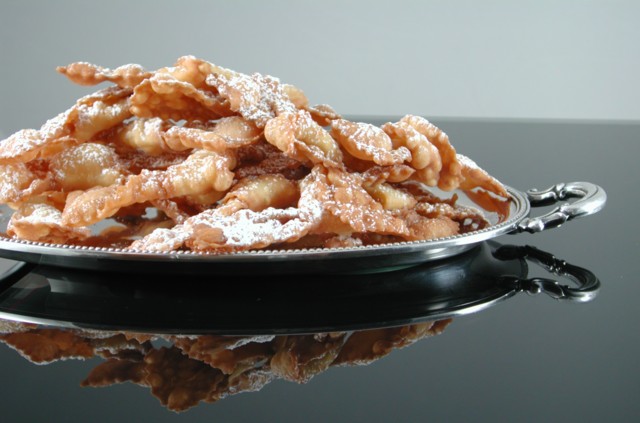


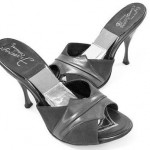
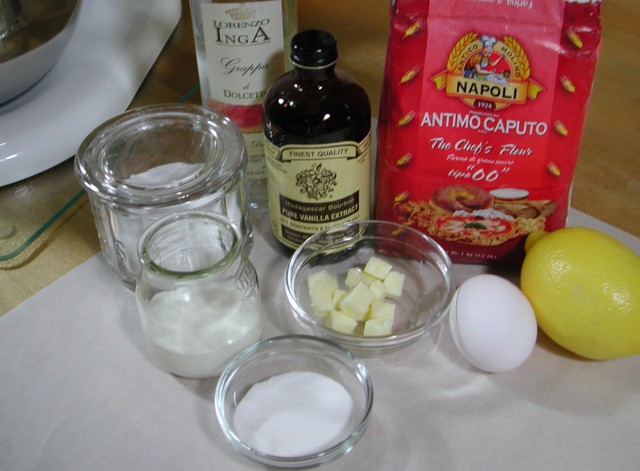

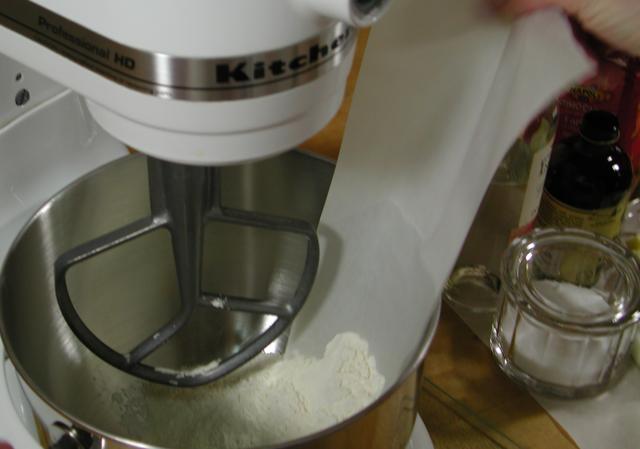










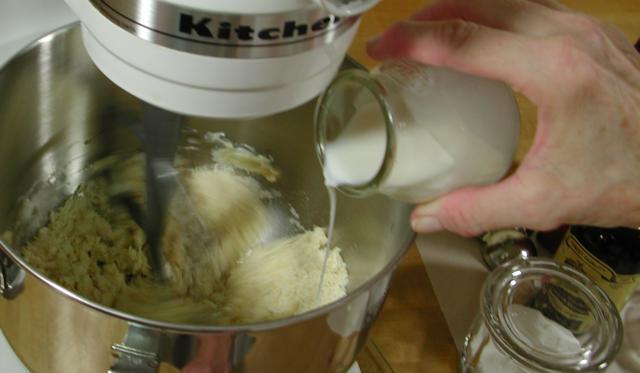

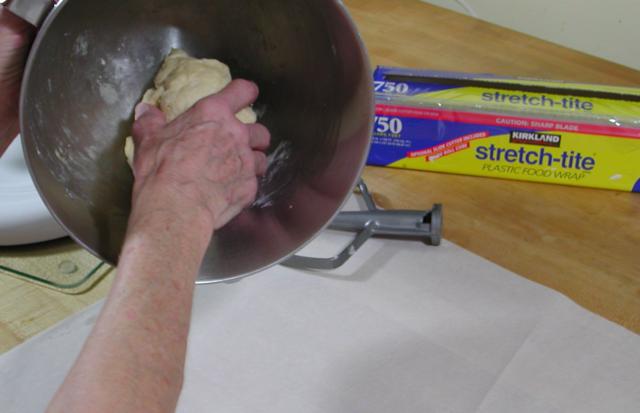
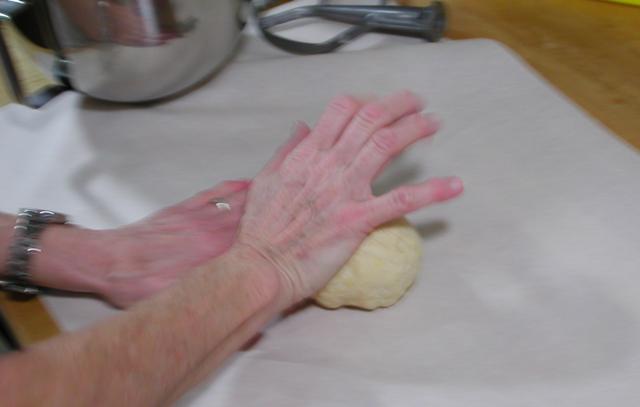
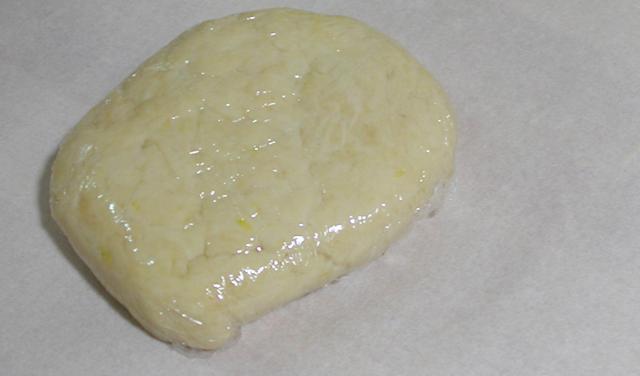
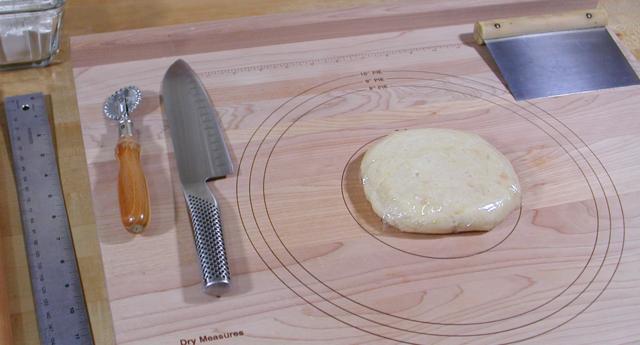
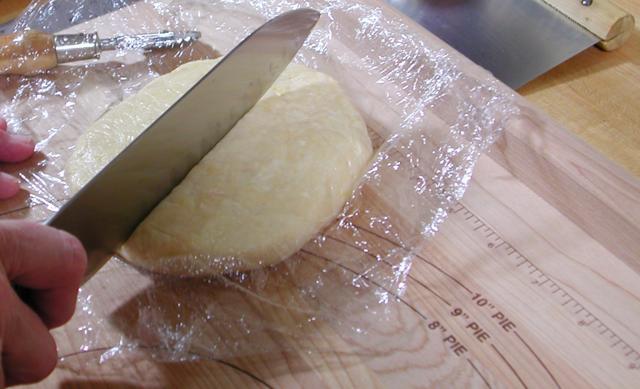

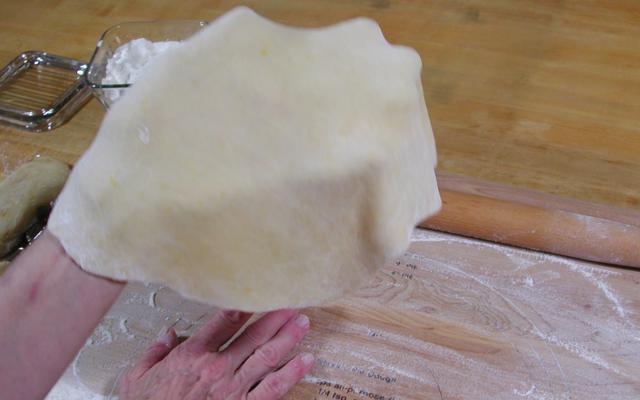
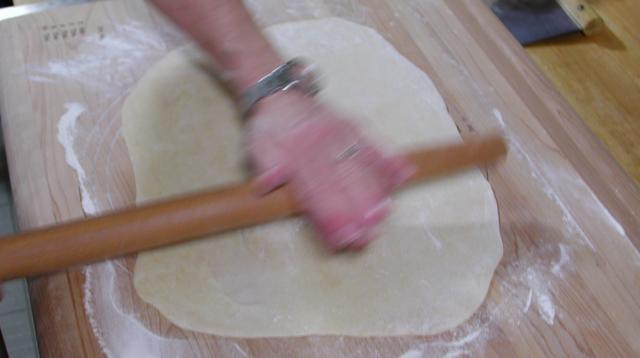

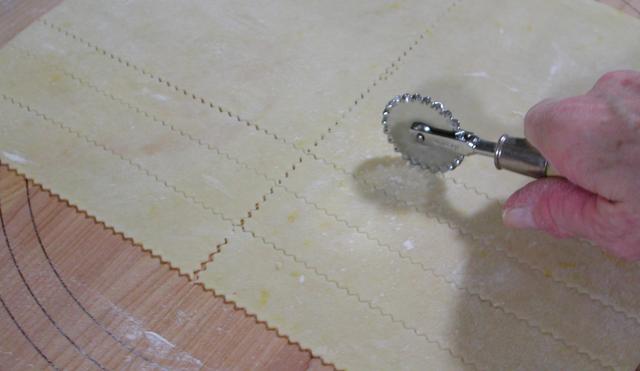
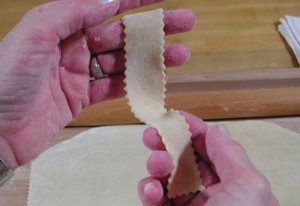
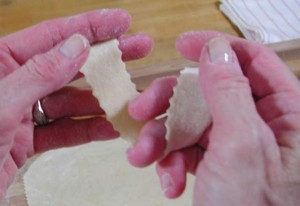


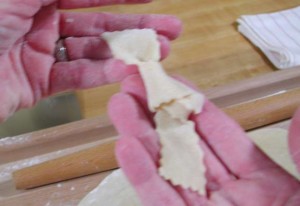
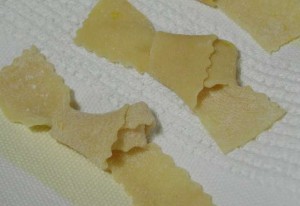
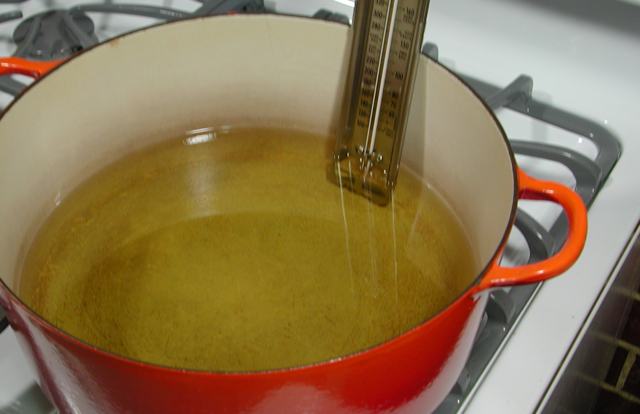



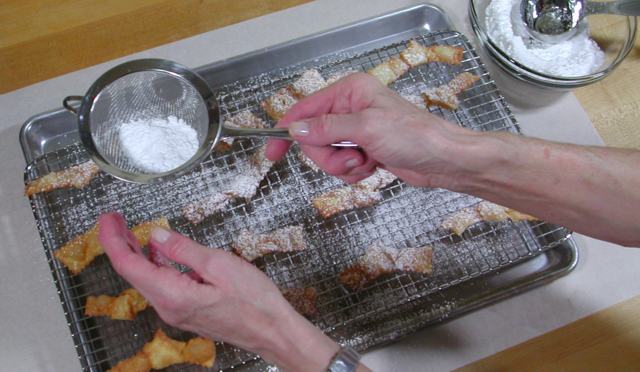
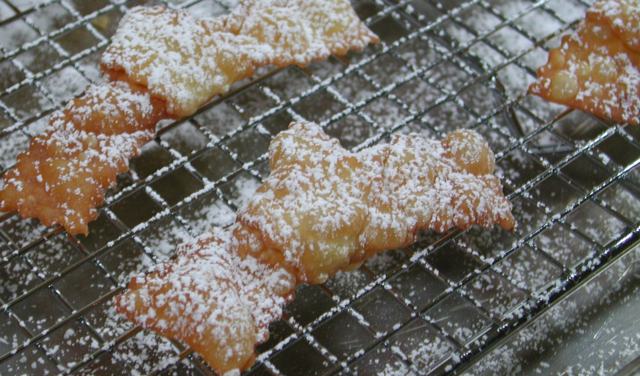
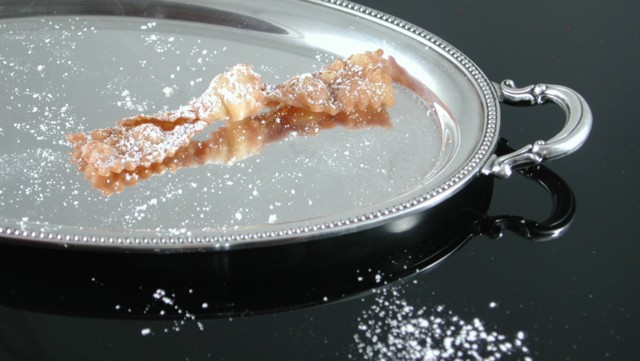

Sunday, September 19th 2010 at 12:35 pm |
What an incredibly beautiful platter of Crostoli! You’ve certainly elevated the category of “fried dough” many, many notches. Thank you for your wonderfully detailed step-by-step photos. You do make it look so simple!
Sunday, September 19th 2010 at 2:31 pm |
I am glad you like it. I hope you try them yourself!
Sunday, February 10th 2013 at 9:51 am |
Like you, I love fried dough in any form, and these are so delicious covered in powdered sugar. My mom used to make them similarly, but she put a slit in the strip and then flipped one end into the slit. Don’t you love all those stories about the different names for these treats?
Sunday, February 10th 2013 at 4:23 pm |
Hi Linda,
I do love the stories. Fried dough is universal. My 12th grade civics teacher, who was of Lithuanian descent, brought the same treat in to class one day. Every one in the class – Greek, Jewish, Polish, you name it – they all gobbled them up and started talking about their grandmothers! It was great.
Saturday, July 20th 2013 at 4:57 am |
Steubenville?! I have been reading these recipes and though they are a bit more upscale than my gramma’s cooking, they have a certain familiarity to me. So now I know why.
The largest Abruzzi population in the States is in and around Akorn-Canton, Ohio. We have sspread out a bit from there, haven’t we?
Thanks for sharing. These recipes evoke memories of my childhood that only food can conjure.
Saturday, July 20th 2013 at 7:15 am |
Welcome Dael!
Yes indeed, Steubenville, and from there my family came to Los Angeles, California. The travel, plus one hundred years has put a different spin on the dishes, but they’re family to me. We sure have spread out since when our forefathers arrived. I bet they would be thrilled to see just how far we have all traveled. Thanks for stopping by. Alla prossima!
Wednesday, February 26th 2014 at 12:08 pm |
Thank you, like I said above, it brings back memories of my grandmother’s baking…………..Thanks, Aagin for sharing
Wednesday, February 26th 2014 at 1:08 pm |
Hi Linda,
It’s my pleasure, and just as Uncle Dean said “Memories are made of this…”
Saturday, October 31st 2015 at 11:54 pm |
Hi Adri
I have sent you an email. Slide show is great
Kind regards
Jo
Sunday, November 1st 2015 at 7:01 am |
Hi Jo,
I am glad you enjoyed the photos. I love a nice plate of Crostoli!